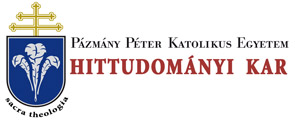Folia Canonica 1. (1998)
BOOK REVIEWS
BOOK REWIEWS 183 (which could be of practical value on occasions) requires further reflections. The present volume by Abbass is of great service to the reader not familiar with the Eastern Code (or with the history of its codification). For the Latin canonist this volume shows that the Eastern Code represents not simply another catholic disciplinary patrimony, but in several cases also a necessary source for the interpretation of his own Code by means of recourse to c. 17 of the CIC 1983. Furthermore, several studies, e.g. those concerning the property rights and the offices are so far unique in the eastern literature and obviously make up for analysis not yet accomlished. To sum up, Abbass presents the reader with a well-structured work containing specific references which may be recommended to all students of canon law and may also be of interest to all those canonists who give serious consideration to the Pope’s call, mentioned above, pertaining to comparative methodology. With regard to the publications written by the Author so far, we may hopefully anticipate further comparative studies from him. These studies not only serve the cause of Eastern Canon Law, but also help to gain recognition for and provide more information on the Eastern Catholic Churches. Through the medium of canon law this promotes an organic interaction based on a thorough reciprocal knowledge - a sign of authentic Catholicity. Péter Szabó R. METZ, Le nouveau droit des Églises orientales catholiques, Paris 1997, 239 pp. A partire dal 18 ottobre 1990, la Chiesa cattolica, formata da tutti i battezzati congiunti a Cristo con i vincoli della professione della fede, dei sacramenti e del govemo ecclesiastico, govemata dal succesore di Pietro e dai Vescovi in comunione con lui, è retta da una duplice legislazione: il Codex Iuris Canonici per la Chiesa latina e il Codex Canonum Ecclesiarum Orientalium per le Chiese orientali cattoliche. A questa duplice legislazione si aggiunge la const, ap. Pastor Bonus (28 giugno 1988) sulla Curia Romana. I due Codici, pur avendo il proprio ambito di applicazione e il proprio soggetto passivo, non sono completamente separati l’uno dall’altro, ma
